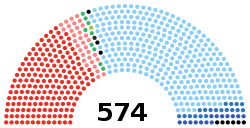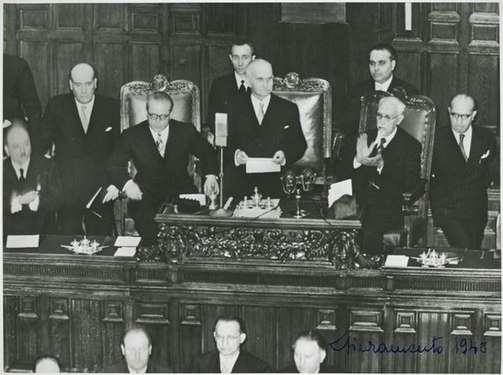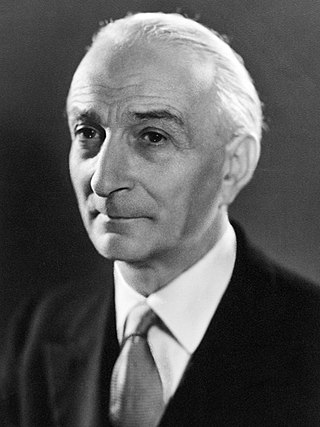
Antonio Segni was an Italian politician and statesman who served as the president of Italy from May 1962 to December 1964 and the prime minister of Italy in two distinct terms between 1955 and 1960.

Amintore Fanfani was an Italian politician and statesman, who served as 32nd prime minister of Italy for five separate terms. He was one of the best-known Italian politicians after the Second World War and a historical figure of the left-wing faction of Christian Democracy. He is also considered one of the founders of the modern Italian centre-left.
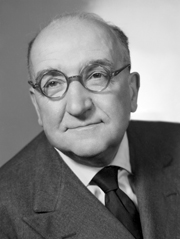
Adone Alvaro Ugo Natale Camillo Zoli was an Italian politician who served as the 35th prime minister of Italy from May 1957 to July 1958; he was the first senator to have ever held the office.

Fernando Tambroni Armaroli was an Italian politician, member of the Christian Democracy, who served as 36th Prime Minister of Italy from March to July 1960. He also served as Minister of the Interior from July 1955 until February 1959, Minister of Budget and Treasury from February 1959 to March 1960 and Minister of the Merchant Navy from August 1953 until July 1955.
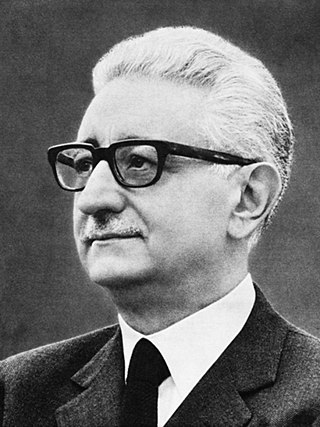
Giovanni Leone was an Italian politician, jurist and university professor. A founding member of the Christian Democracy (DC), Leone served as the President of Italy from December 1971 until June 1978. He also briefly served as Prime Minister of Italy from June to December 1963 and again from June to December 1968. He was also the president of the Chamber of Deputies from May 1955 until June 1963.

Mario Scelba was an Italian politician who served as the 33rd prime minister of Italy from February 1954 to July 1955. A founder of the Christian Democracy, Scelba was one of the longest-serving Minister of the Interior in the history of the republic, having served at the Viminale Palace in three distinct terms from 1947 to 1962. A fervent pro-Europeanist, he was also President of the European Parliament from March 1969 to March 1971.

Giuseppe Pella was an Italian Christian Democratic politician who served as the 31st prime minister of Italy from 1953 to 1954. He was also Minister of Treasury, Budget and of Foreign Affairs during the 1950s and early 1960s. Pella served as President of the European Parliament from 1954 to 1956 after the death of Alcide De Gasperi.

The Legislature II of Italy was the 2nd legislature of the Italian Republic, and lasted from 25 June 1953 until 11 June 1958. Its composition was the one resulting from the general election of 7 June 1953.

The Legislature III of Italy was the 3rd legislature of the Italian Republic, and lasted from 12 June 1958 until 15 May 1963. Its composition was the one resulting from the general election of 25 May 1958.

The Legislature IV of Italy was the 4th legislature of the Italian Republic, and lasted from 16 May 1963 until 4 June 1968. Its composition was the one resulting from the general election of 28 April 1963.

The Legislature V of Italy was the 5th legislature of the Italian Republic, and lasted from 5 June 1968 until 24 May 1972. Its composition was the one resulting from the general election of 19 May 1968.
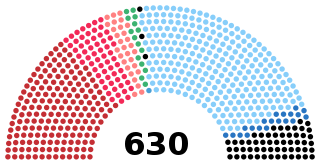
The Legislature VI of Italy was the 6th legislature of the Italian Republic, and lasted from 25 May 1972 until 4 July 1976. Its composition was the one resulting from the general election of 7 May 1972.

The Legislature VII of Italy was the 7th legislature of the Italian Republic, and lasted from 5 July 1976 until 19 June 1979. Its composition was the one resulting from the general election of 20 June 1976.

The Legislature VIII of Italy was the 8th legislature of the Italian Republic, and lasted from 20 June 1979 until 11 July 1983. Its composition was the one resulting from the general election of 3 June 1979.

The Legislature IX of Italy was the 9th legislature of the Italian Republic, and lasted from 12 July 1983 until 1 July 1987. Its composition was the one resulting from the general election of 26 and 27 June 1983. The election was called by President Sandro Pertini one year before the previous legislature's natural end on 5 May 1983, after a crisis in the incumbent government majority (Pentapartito).

The Legislature X of Italy was the 10th legislature of the Italian Republic, and lasted from 2 July 1987 until 22 April 1992. Its composition was the one resulting from the general election of 14 and 15 June 1987. The election was called by President Cossiga on 28 April 1987, when he dissolved the Houses of Parliament.
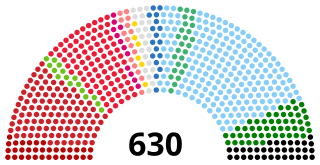
The Legislature XI of Italy was the 11th legislature of the Italian Republic, and lasted from 23 April 1992 until 14 April 1994. Its composition was the one resulting from the general election of 5 and 6 April 1992. The election was called by President Cossiga on 3 February 1992.

The Legislature XIII of Italy lasted from 9 May 1996 until 29 May 2001. Its composition was the one resulting from the general election of 21 April 1996. The election was called by President Scalfaro after the technocratic government of Lamberto Dini lost its support in the Parliament in 1995. President Scalfaro dissolved the houses of Parliament on 16 February 1996. The legislature ended after completing its five-year-long natural course, when President Ciampi dissolved the houses on 8 March 2001.

The 1955 Italian presidential election was held in Italy on 28–29 April 1955. Giovanni Gronchi, President of the Chamber of Deputies, was elected President of Italy

The Legislature XV of Italy started on 28 April 2006 and ended on 28 April 2008. Its composition resulted from the election of 9–10 April 2006, called after President Ciampi dissolved the houses on 11 February 2006, at the end of the previous legislature. This legislature was the second shortest in the history of the Italian Republic, lasting exactly two years, and ending when President Giorgio Napolitano dissolved the houses on 6 February 2008, after a vote of no confidence on the incumbent Prodi Cabinet.
